November 2020
Max Dupain (Australian, 1911-1992)
Sydney Harbour Crepuscule
1937
Gelatin silver print
32.5 x 47cm
Noun. crépuscule m (plural crépuscules) twilight, dusk (the time of the day when the sun sets)
Iv’e been saving up these images for some time. This, the first of a two-part posting, features many images that are rare online, especially in a large size.
Dupain was a master of the use of light and form (Tea Towel Trio, 1934), an early proponent of Modernist photography in Australia (Silos at Pyrmont; Silos through windscreen, both 1935), an expert in night photography (Mosman Bay at dusk, 1937) and the use of chiaroscuro (Passengers Disembarking from Ferry, 1950s; Newsstand, Nd). He was an innovator in surrealist photography (Night with her train of stars and her gift of sleep, 1936-37), photomontage (Nude Figure with Shell Transposed, 1936), and advertising photography. His nude studies evidence an experimentation towards the representation of the human body (Jean with Wire Mesh, 1938; Nude Figure behind Wire Mesh, 1930s), his portraits possess a sensitivity and feeling towards subject matter (Portrait of Boy in Sunlight, 1936), while his portrayal of Australian culture – the body as architecture (Bondi, 1939); the myth of the surf lifesaver (Life Guards with Flag and Reel March, Nd); and the bustling metropolis (Rush Hour, Kings Cross, 1938) address the burgeoning self confidence of the Australian nation in the 1930s.
Seemingly, there was nothing that Dupain could not turn his hand too, that he could not photograph.
What strikes me most when looking at his photographs is the precision of his visual inquiry. His focus, his previsualisation, in knowing exactly what he wanted to say in that image – even while shifting genres and points of view. Like the subtle camera positioning of Atget where the angles are not what you would expect, Dupain rarely puts his camera where a mere mortal would stand to take a photograph. He looks, down (Manly, 1940s), up (crouching on his haunches to make the Life Guards and the Bondi couple seem monumental) and across – framing his compositions with diagonals, arches, and waves of people, almost like musical annotation. Everything looks simple and eloquent, elegant, but beneath the surface these are sophisticated images.
Far from being nostalgic, I look at Dupain’s body of work, and then at an individual photograph like Buses, Eddy Avenue (Nd) – and marvel at Dupain’s contemporary rendition (rending?) of time and space. Placing his camera as far to the right as he dared, Dupain captures the diagonal line of the parked buses in sunlight framed by the dark arch of the tunnel, the tram passing from left to right, the perfectly positioned clocktower and willowy flag giving a sense of movement… and then that man, that man, standing stock still at right with his shadow falling in front of him. IF he was not there, the whole focus of the image, the punctum, would be gone. It would just be a serviceable image. But he IS there and Dupain recognised that!
Similarly, in one of my favourite photographs by Dupain, At Newport (1952) “Dupain’s viewpoint turns the top of the wall into a taught line across the picture and his five bathers are strung out along it and held in tension like forms on a wire. As one prepares to dive, his counterweight, the sinewy young man, descends on the dry side. At the picture’s edges, the girls in bathing caps counterbalance the boy with hunched shoulders.” Birds on a wire, notes on a musical stave. Can you imagine being Dupain standing there and recognising that composition and the distorted shadow, in that very instance of its emergence, its flowering, for that ever so brief second in the existence of the cosmos….
Simply put, Max Dupain is the greatest Australian male photographer that has ever lived.
Dr Marcus Bunyan
View Max Dupain photographs Part 2
All images are used under fair use conditions for the purpose of educational research. Please click on the photographs for a larger version of the image.
Max Dupain (Australian, 1911-1992)
Mosman Bay at dusk
1937
Gelatin silver print
28 x 37.5cm
Max Dupain (Australian, 1911-1992)
Night with her train of stars and her gift of sleep
1936-37
Gelatin silver print
30 x 36cm
Max Dupain (Australian, 1911-1992)
(Rhythmic Form)
1935
Gelatin silver print
22.5 x 30.5cm
Max Dupain (Australian, 1911-1992)
(Nude Figure with Trombone Shadow)
1930s
Gelatin silver print
25 x 17.5cm
Max Dupain (Australian, 1911-1992)
(Nude Figure with Shell Transposed)
1936
Gelatin silver print
50 x 35.5cm
Max Dupain (Australian, 1911-1992)
Two forms
1939
Gelatin silver print
50.5 x 38.5cm
This photograph relates conceptually to Dupain’s experiments with photographs of nudes. According to the vitalist philosophies of the time, the spiralling rounded shell being shaped by nature is feminine, while the hard metallic tool is man-made and represents the masculine principle. Photographed on a plain surface and lit with raking light, the sense of space is ambiguous. Dupain retained an interest in still-lifes throughout his career, returning to them particularly towards the end of his life. In the 1930s his most well-known still-life was Shattered intimacy 1936 (AGNSW collection) where an image of broken glass and a broken classical statue has been solarised, producing a powerful narrative. Two forms is a more contemplative image as the shell and the head of a hammer lie side by side and are of similar scale. Interestingly, the two forms are distant from each other, rather than close together, and their scale gives them equality. It is not known whether Dupain necessarily subscribed to the contemporaneous anxiety about the ‘new woman’, but certainly one can read this image as an examination of difference.
© Art Gallery of New South Wales Photography Collection Handbook, 2007
Max Dupain (Australian, 1911-1992)
Tea Towel Trio
1934
Gelatin silver print
29.5 x 22cm
Max Dupain (Australian, 1911-1992)
Still Life
1935
Gelatin silver print
29.5 x 21.5cm
Max Dupain (Australian, 1911-1992)
Blankets
Nd
Gelatin silver print
31 x 24cm
Max Dupain (Australian, 1911-1992)
(Male Nude with Discus)
Nd
Gelatin silver print
39 x 32cm
Max Dupain (Australian, 1911-1992)
Dart
1935
Gelatin silver print
50 x 37.5cm
Max Dupain (Australian, 1911-1992)
Dart
1935
Gelatin silver print
Max Dupain (Australian, 1911-1992)
Sleeping Boy
1941
Gelatin silver print
Max Dupain (Australian, 1911-1992)
Portrait of Boy in Sunlight
1936
Gelatin silver print
29 x 26cm
Max Dupain (Australian, 1911-1992)
Jean with Wire Mesh
1938
Gelatin silver print
49.5 x 39.5cm
In 1937, [Jean] Bailey posed for Jean with wire mesh, which some experts hail as the single most powerful image ever taken by Max Dupain, generally regarded as Australia’s greatest lensman.
It’s more subtle than his most famous image, Sunbaker, also shot in 1937. It’s less frozen in time than his striking scenes of wartime Australians serving in New Guinea. It’s more universal than his evocative tableaux of shearers, cattle drovers, miners and “six o’clock swillers”. And it’s less contrived than the commissioned portraits he took of wealthier women for the equivalent of today’s social pages.
Of all the many women who posed for his camera, Bailey was regarded as Dupain’s muse. Even by her own admission, she was not the most beautiful woman in 1930s Sydney.
In some pictures, by other photographers, she looks quite plain. …
But Dupain saw something special in her, though even Bailey does not know what it was.
“It’s not enormously erotic,” says [Alan] Davies. “But it is incredibly sensual, masterful in its use of light and shade. To photograph someone with her forehead in full sunlight and the rest of her figure cloaked in shadow is an extraordinary technical achievement. Most photographers would regard it as professional suicide. They wouldn’t attempt it.”
The image, he says, “is an astonishing masterpiece of chiaroscuro”. Unlike so many of Dupain’s images, this – and another outstanding work in the exhibition of an unknown model called Nude with pole – are timeless, betraying none of the nostalgia for which Dupain is so often noted.
White, who under Dupain’s tutelage became an accomplished photographer herself, says simply, “I think Jean with wire mesh is his most beautiful image. It leaves Sunbaker for dead.”
Anonymous. “Portrait of a lady,” on The Sydney Morning Herald website, July 12, 2003 [Online] Cited 24/10/2020
Max Dupain (Australian, 1911-1992)
(Nude Figure behind Wire Mesh)
1930s
Gelatin silver print
50.5 x 40 cm
Max Dupain (Australian, 1911-1992)
Hands of a Dancer
1935
Gelatin silver print
29 x 27.5cm
Max Dupain (Australian, 1911-1992)
Artist and Model
1938
Gelatin silver print
35.5 x 30.5cm
Max Dupain (Australian, 1911-1992)
(Super-Imposed Woman and Night Cityscape)
1937
Gelatin silver print
46 x 35cm
Max Dupain (Australian, 1911-1992)
Fire Stairs at Bond Street Studio (Solarised)
1935
Gelatin silver print
30 x 21.5cm
Max Dupain (Australian, 1911-1992)
Fire Stairs at Bond Street Studio
1930s
Gelatin silver print
24.5 x 9cm
Max Dupain (Australian, 1911-1992)
(Olive Cotton in Wheat Fields)
Nd
Gelatin silver print
30 x 30cm
Max Dupain (Australian, 1911-1992)
(Fire Stairs at Bond Street)
1934
Gelatin silver print
26 x 21cm
Max Dupain is Australia’s most celebrated modernist photographer. Born in the Sydney, Dupain practiced photography as a teenager, receiving his first camera in 1924. In 1929 he joined the New South Wales Photographic Society, and in 1930 was employed in the studio of prominent Pictorialist Cecil Bostock, where he received solid training in all aspects of photography. He established his own studio in Sydney in 1934, servicing commercial clients and producing still lifes, figure photography and portraits. In his personal work, he explored the surrealist aesthetic of Man Ray, experimenting with formal abstraction and montage. With the outbreak of World War II, Dupain worked with the Camouflage Unit in 1941, travelling to New Guinea and the Admiralty Islands. His photography of the 1960s and 70s was shaped by architectural interests and he fostered working relationships with several prominent architects, most notably Harry Seidler.
Text from the Art Gallery of New South Wales website [Online] Cited 24/10/2020
Max Dupain (Australian, 1911-1992)
Silos through windscreen
1935
Gelatin silver print
40 x 43cm
While cars and machinery were rarely Max Dupain’s personal choice of forms to photograph, his Silos through windscreen 1935 embraces the new age from a new perspective. It is an uncharacteristically complex composition. The view of the silos from the front seat shows off the car’s smart dashboard; at the same time his camera records a fragment of a brick factory reflected in the rear vision mirror.
Max Dupain (Australian, 1911-1992)
Silos at Pyrmont
1935
Gelatin silver print
49 x 37cm
Pyrmont silos is one of a number of photographs that Dupain took of these constructions in the 1930s. In all cases Dupain examined the silos from a modernist perspective, emphasising their monumentality from low viewpoints under a bright cloudless sky. Additionally, his use of strong shadows to emphasise the forms of the silos and the lack of human figures celebrates the built structure as well as providing no sense of scale. Another photograph by Dupain in the AGNSW collection was taken through a car windscreen so that the machinery of transport merges explicitly with industrialisation into a complex hard-edge image of views and mirror reflections. There were no skyscrapers in Sydney until the late 1930s so the silos, Walter Burley Griffin’s incinerators and the Sydney Harbour Bridge were the major points of reference for those interested in depicting modern expressions of engineering and industrial power.
Dupain was the first Australian photographer to embrace modernism. One of his photographs of the silos was roundly criticised when shown to the New South Wales Photographic Society but Dupain forged on regardless with his reading, thinking and experimentation. Some Australian painting and writing had embraced modernist principles in the 1920s, but as late as 1938 Dupain was writing to the Sydney Morning Herald:
“Great art has always been contemporary in spirit. Today we feel the surge of aesthetic exploration along abstract lines, the social economic order impinging itself on art, the repudiation of the ‘truth to nature criterion’ … We sadly need the creative courage of Man Ray, the original thought of Moholy-Nagy, and the dynamic realism of Edouard [sic] Steichen.”1
1. Dupain, M. 1938, ‘Letter to the editor’, Sydney Morning Herald, 30 March
© Art Gallery of New South Wales Photography Collection Handbook, 2007
Max Dupain (Australian, 1911-1992)
Bondi
1939
Gelatin silver print
37 x 37.5cm
Dupain was one of the first Australian photographers to embrace Modernism. The simplicity of form and unusually low vantage point of this picture reflect the influence of German photography that he saw in the journal Das Deutsche Lichtbild. At first Dupain preferred another version of the image; when it was published in 1948, the photograph shows the woman standing with her arms folded. Here, she leans toward the man, their bodies slightly overlapping. Standing parallel to the picture plane, their bodies and those of the young men at their sides form a pyramid – one of Dupain’s preferred forms at this time.
Text © National Gallery of Australia, Canberra
Max Dupain (Australian, 1911-1992)
At Newport
1952
Gelatin silver print
25 x 29cm
There is a strong sense of masculinity found in many of Dupain’s beach works. In At Newport this is emphasised by the strong, angular lines of the figures, an image that seems to capture the essence of male youth at the beach. In this image, three male swimmers are positioned in the foreground of a beachside pool setting. The long shadows of the late summer sun place further emphasis on the angularity and thus the masculinity that is a feature of this image.
Text from the Annette Larkin Fine Art website
Max Dupain (Australian, 1911-1992)
At Newport
1952
Gelatin silver print
45.0 x 40.0cm
National Gallery of Australia
Purchased 1976
Dupain took At Newport in 1952 at the Newport Baths, as it was then known, a sea-water pool next to the Pacific Ocean about 20 miles north of Sydney. It’s an ambiguous photograph in more ways than one because the angle of the shot makes it seem as if the tremendous weight of the sea is being held back by nothing stronger than a low wall, with the water rising almost to the brim. Dupain’s viewpoint turns the top of the wall into a taught line across the picture and his five bathers are strung out along it and held in tension like forms on a wire. As one prepares to dive, his counterweight, the sinewy young man, descends on the dry side. At the picture’s edges, the girls in bathing caps counterbalance the boy with hunched shoulders. The distant pillars along the side of the pool duplicate these intervals. There appears to be some indecision, though, about the crop Dupain intended on the right. A print in his archive shows space between the right-hand girl and the edge, which is better, while a print in a national collection omits her entirely. Losing her disembodied head and intense concentration on the diver weakens the photograph. (There is also a second picture of bathers from the same group (below))
At Newport can be straightforwardly construed as another celebration by Dupain the dedicated modernist of the vitalising power of sunlight and the exuberant Australianness of the beach, but there is an alternative way of reading it. An essay in Dupain’s Sydney (1999) notes that the photographer didn’t like people very much, valued solitude, and would rather be doing something than have to talk. (He was remarkably industrious, leaving an archive of more than a million pictures.) This group of bathers is together but disconnected. Two faces are hidden and unknowable, looking down at the water, and the others are half-concealed in shadow, lost in their own thoughts. Then there is the ungainly shape cast by the young man’s long legs, which serves as a foil to the dark tones of the rising land. The shadow introduces an element of discord and adds to the mood of subtle disquiet.
Rick Poynor. “Exposure: Newport Baths by Max Dupain,” on the Design Observer website 23/06/2015 [Online] Cited 24/10/2020
Max Dupain (Australian, 1911-1992)
Newport Baths I
1952
Gelatin silver print
23.5 x 25.5cm
Max Dupain (Australian, 1911-1992)
Bondi Couple
1950s
Gelatin silver print
20.5 x 20.5cm
Max Dupain (Australian, 1911-1992)
Manly
1940s
Gelatin silver print
47 x 37.5cm
From 1938, and throughout the late 1940s after his return from the war, Dupain took many photographs of Manly beach from the high vantage point offered by its iconic shark tower. These landscapes often found striking diagonal obliques in the convergence of incoming surf, the activities of lifesavers, the lines of beachgoers, and the surrounding modernist architecture, including promenades. These photographs tell us as much about Dupain’s leisure time as they do his artistic interests: the beach was ‘how I used to spend my weekends’, Dupain later wrote. More than its convenience, Manly offered a very local experience of modernity. Dupain strongly believed in and advocated for a contemporary photography, that it was important to consciously be part of the age into which one was born.
Text © National Gallery of Australia, Canberra
Max Dupain (Australian, 1911-1992)
(Life Guards with Flag and Reel March)
Nd
Gelatin silver print
26 x 26.5cm
Max Dupain (Australian, 1911-1992)
(Life Savers at Attention in a Row)
1940s
Gelatin silver print
25.5 x 30 cm
Max Dupain (Australian, 1911-1992)
Lifesavers
1940s
Gelatin silver print
36.5 x 47.5cm
Max Dupain (Australian, 1911-1992)
(Passengers Disembarking from Ferry)
1950s
Gelatin silver print
30.5 x 30.5cm
Max Dupain (Australian, 1911-1992)
(Male Commuters departing Ferry)
Nd
Gelatin silver print
27 x 26cm
Max Dupain (Australian, 1911-1992)
(Newsstand)
Nd
Gelatin silver print
36 x 30.5cm
Max Dupain (Australian, 1911-1992)
Meat Queue, Sydney
1946
Gelatin silver print
40.5 x 50.5cm
Meat queue, Sydney was one in a series of pictures Sydney photographer Max Dupain undertook for the Department of Information. When interviewed by curator Helen Ennis in 1991 Dupain said:
“We were doing a story on queues after the war. They were all over the place – queues for buses, vegetables, fruit. I just happened to come across this butcher shop in Pitt Street, I think it was. Here they were all lined up, and I went around it, took a number of pictures, ultimately ending up with this sort of architectural approach with four of five females all dressed in black with black hats, not looking too happy about the world. Suddenly one of them breaks the queue when I’m focused up all ready to go, pure luck.”1
The solidity of the linear figures taken from mid distance beneath a meat coupon scale which will weigh a proportion of meat with the allowable coupons democratises the women. The picture is given a sudden focus as the central figure decides to move from the queue and unwanted contact is made with the woman ahead. Described as both a documentary photograph, but not necessarily a social comment, the economic food-rationing of postwar Australia is shown in this clear modernist image of black-and-white shapes in shallow space. Form rather than content defines this image. The central figure in a lighter coloured coat is balanced on either side by the darker coats as the black hats, which make a wave along the horizontal, parallel the line of meat hooks.
1. Ennis, H. 1991, Max Dupain: photographs, Australian National Gallery, Canberra p. 18.
© Art Gallery of New South Wales Photography Collection Handbook, 2007
Max Dupain (Australian, 1911-1992)
Morning Commuters, The Kabu, Circular Quay
1938
Gelatin silver print
32.5 x 30cm
Max Dupain (Australian, 1911-1992)
Tram Abstraction
1930
Gelatin silver print
23.5 x 20cm
Max Dupain (Australian, 1911-1992)
(Buses, Eddy Avenue)
Nd
Gelatin silver print
17.5 x 17cm
Max Dupain (Australian, 1911-1992)
Rush Hour, Kings Cross
1938
Gelatin silver print
Max Dupain (Australian, 1911-1992)
Rush Hour, Kings Cross
1938
Gelatin silver print
Max Dupain (Australian, 1911-1992)
Rush Hour, Kings Cross
1938
Gelatin silver print
40.5 x 42cm




























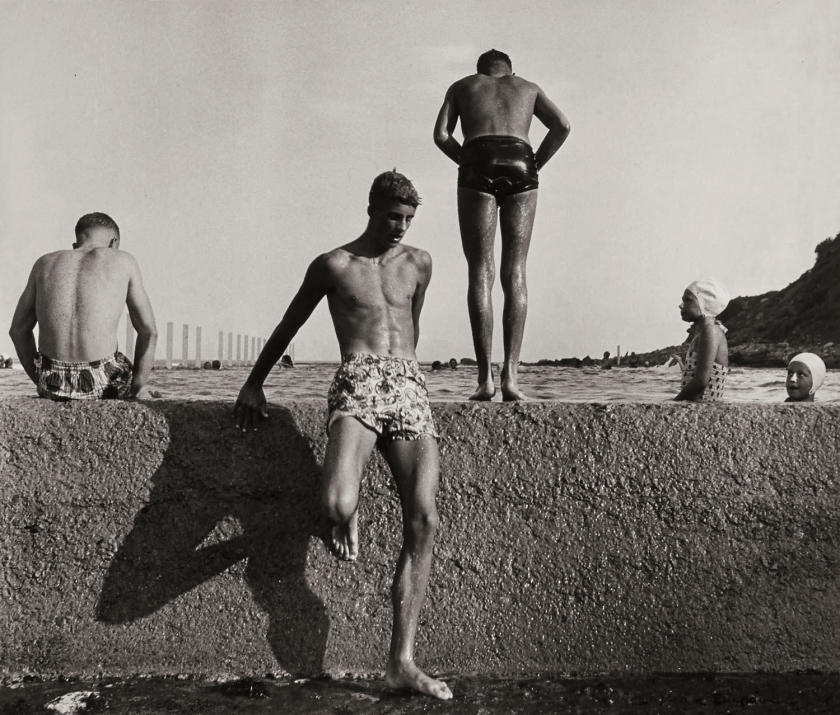

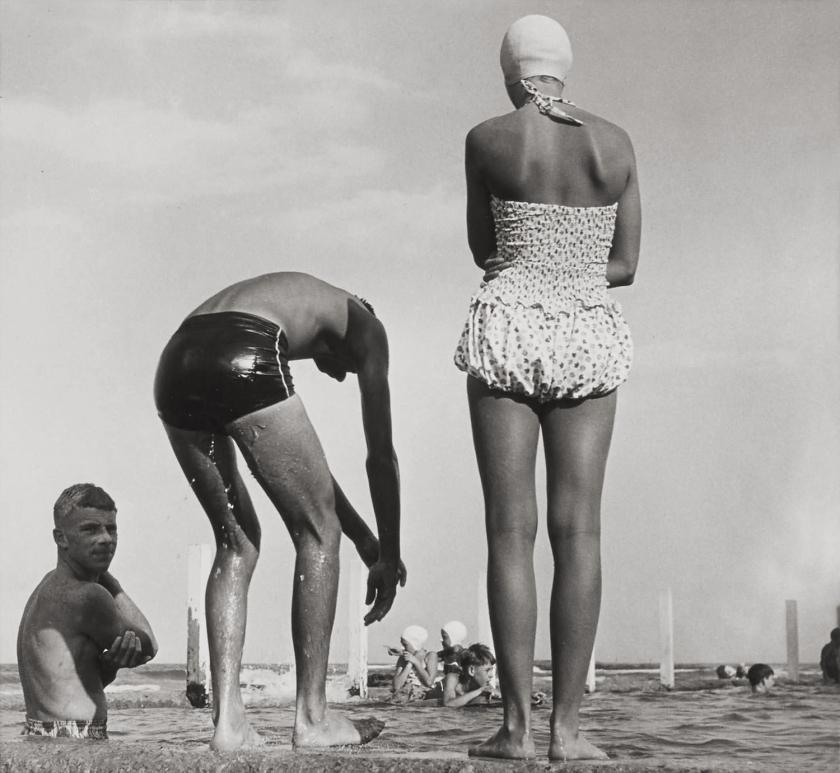



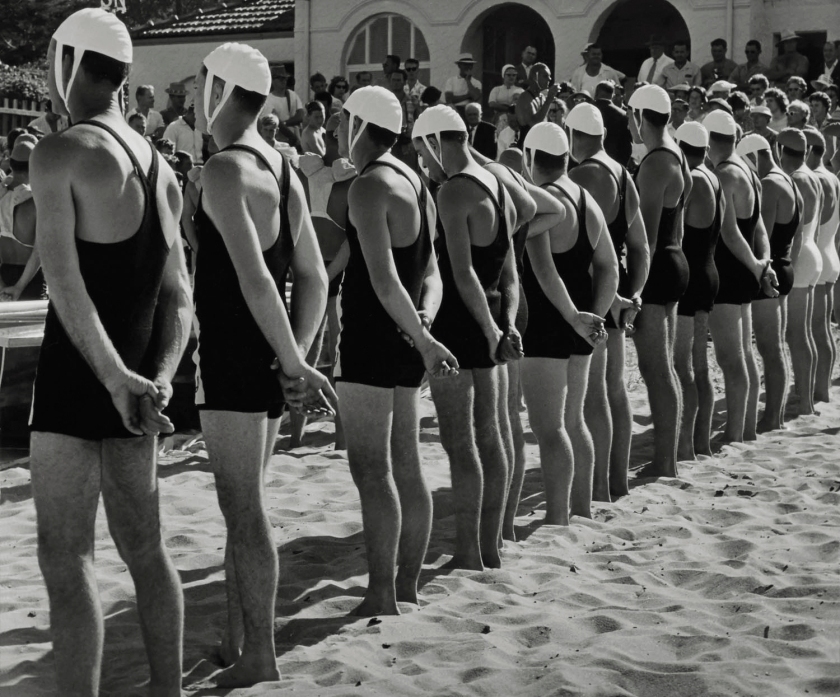












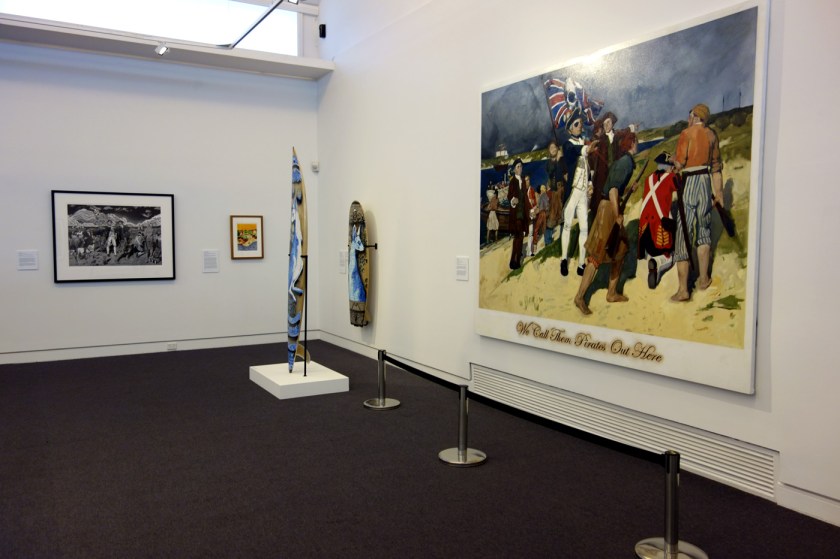




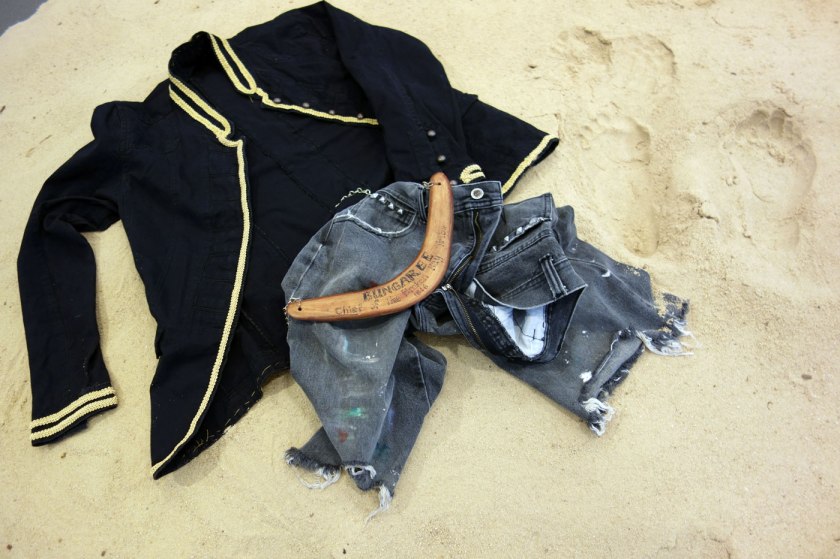
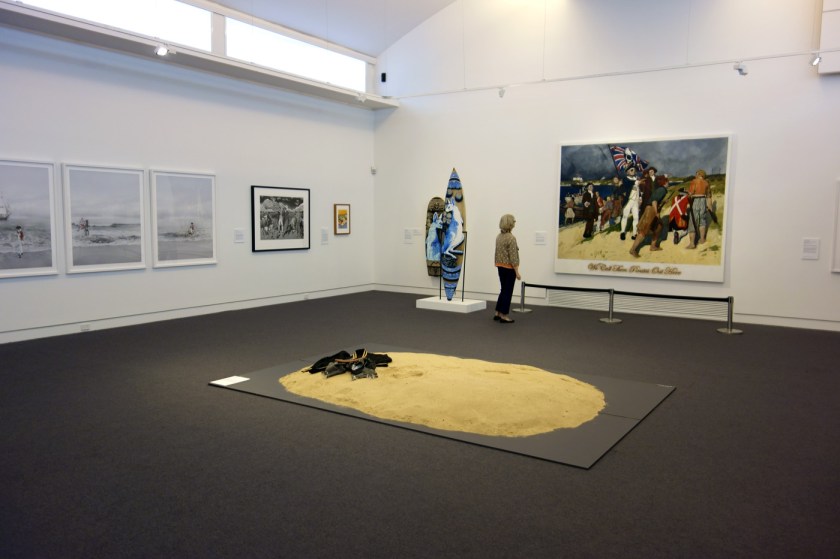


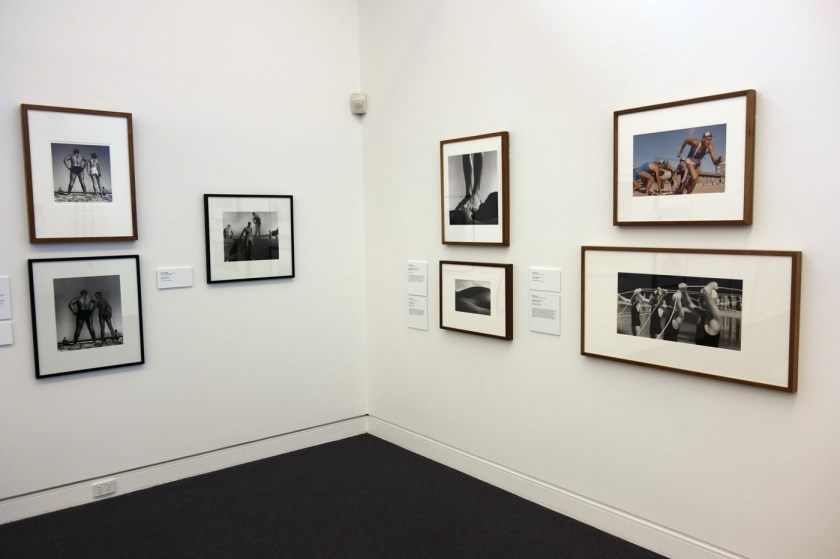
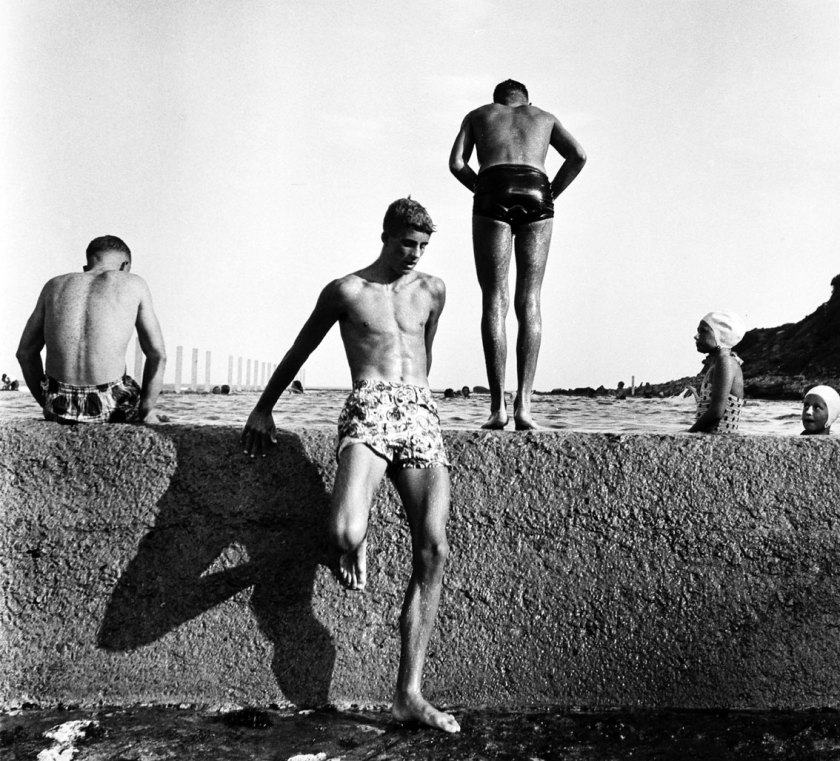



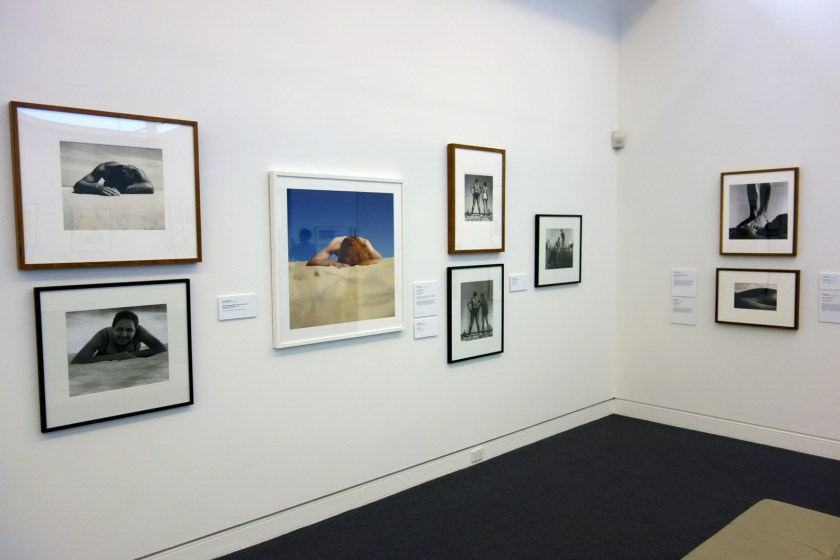



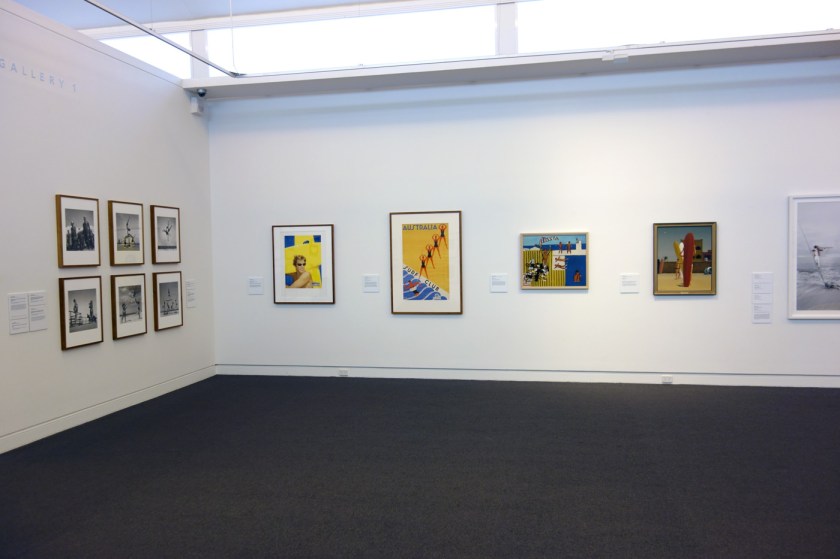
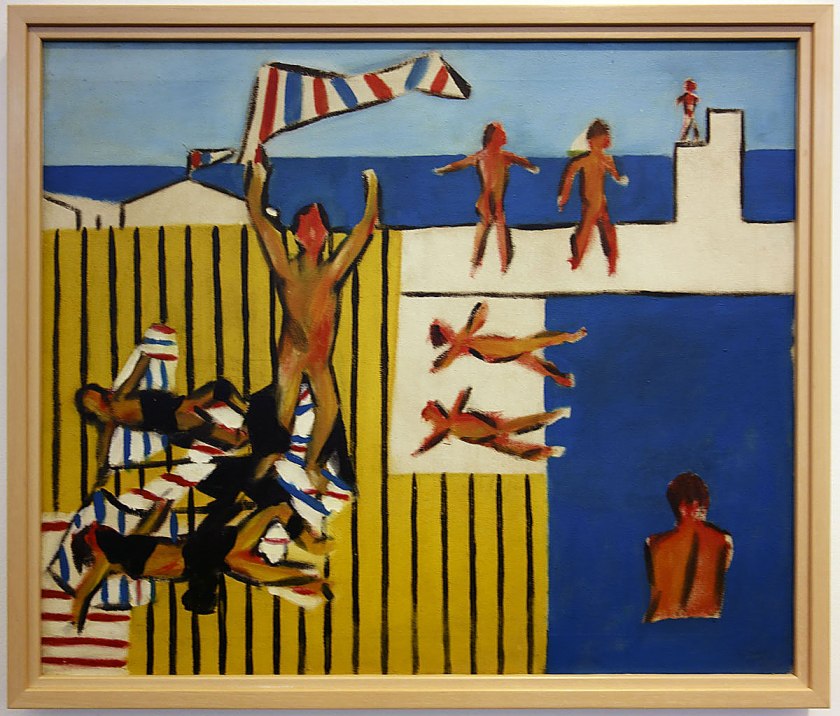

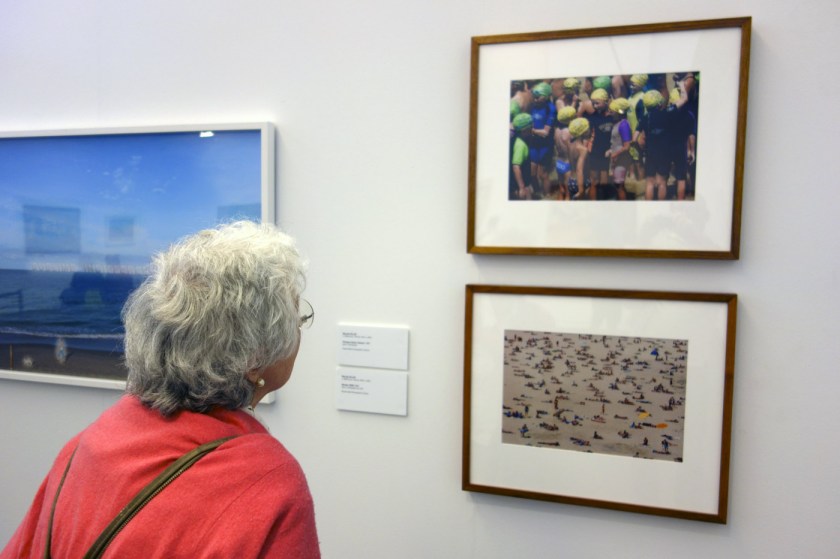
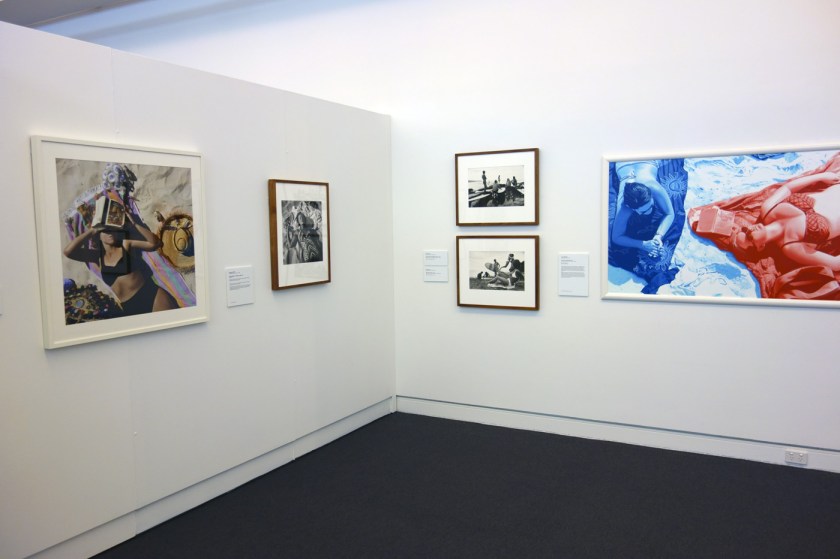



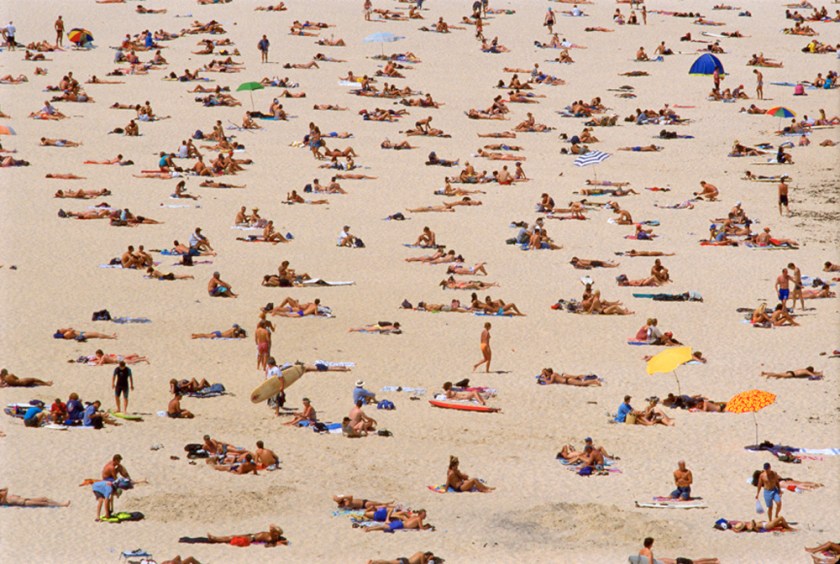

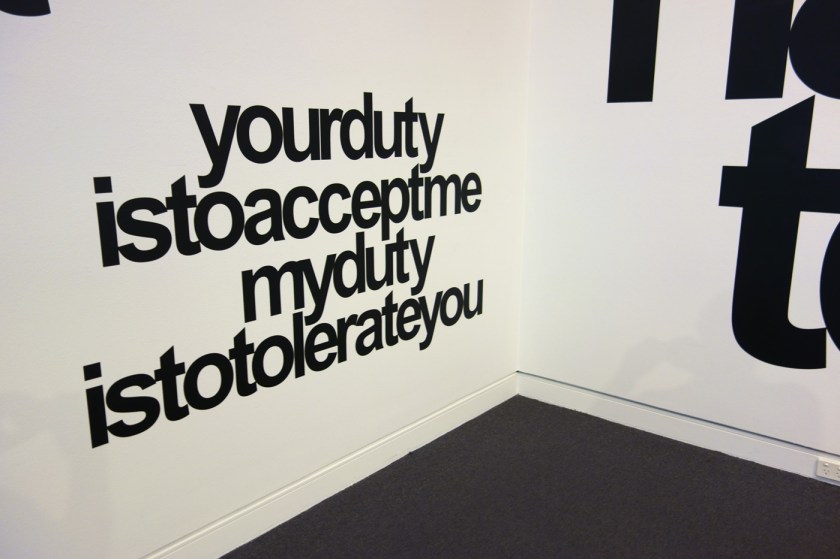





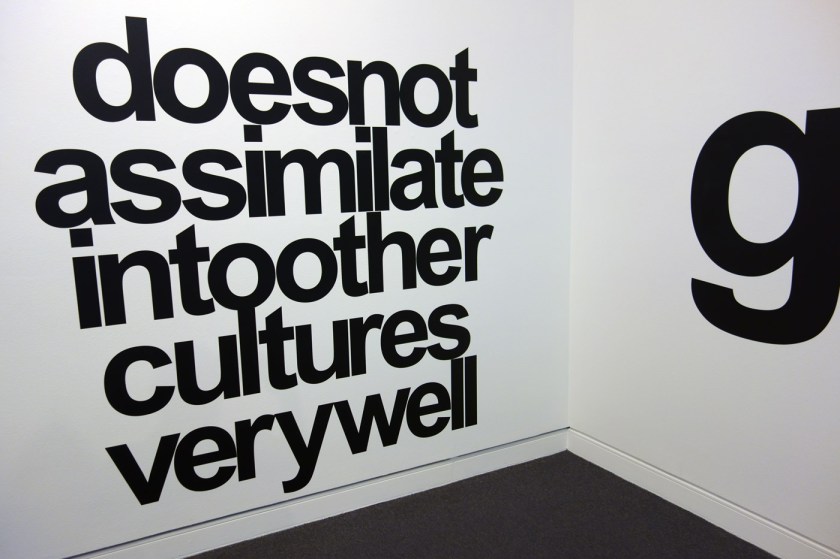

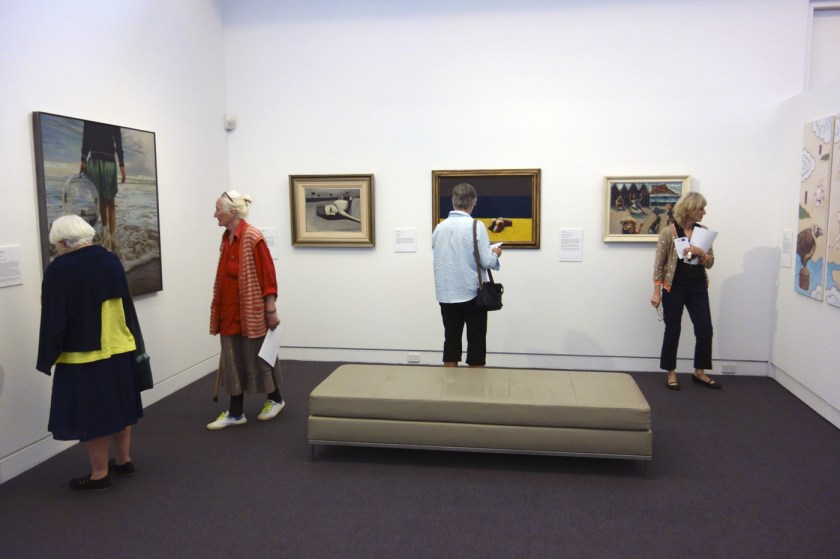
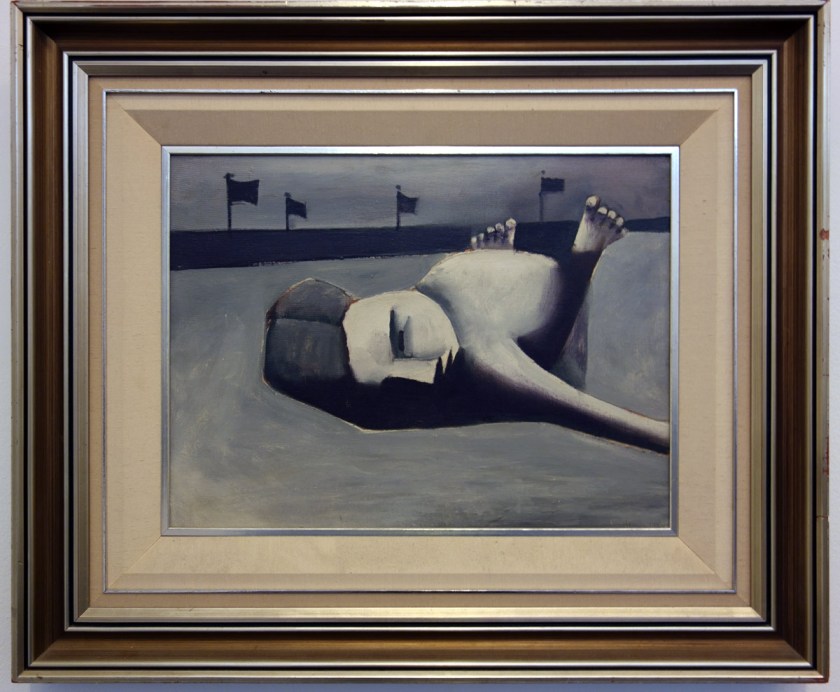

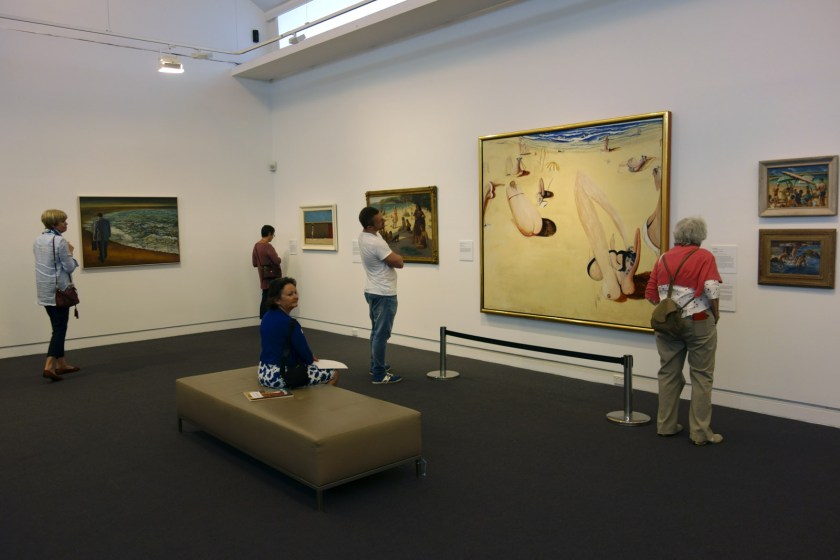

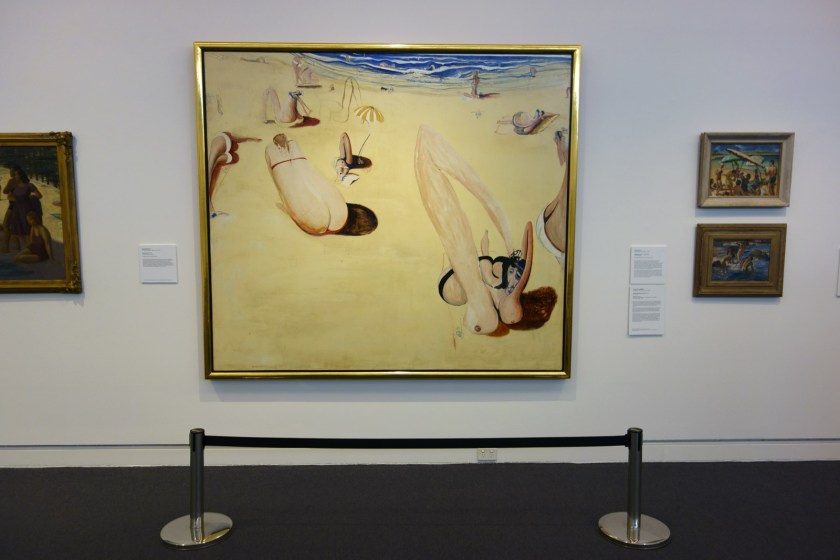

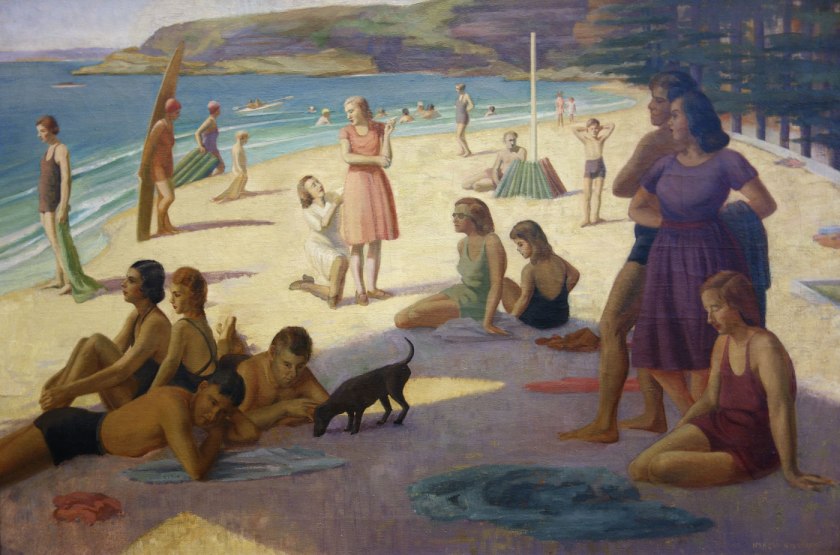

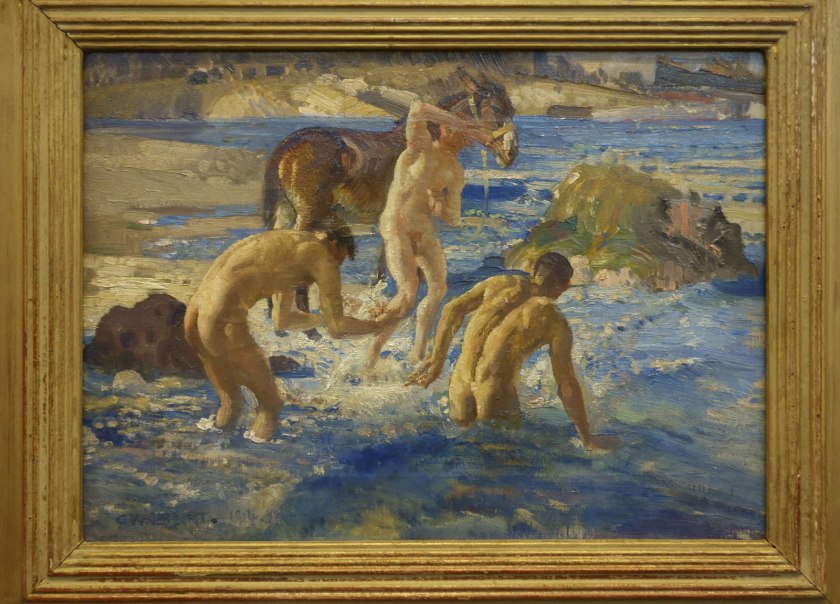
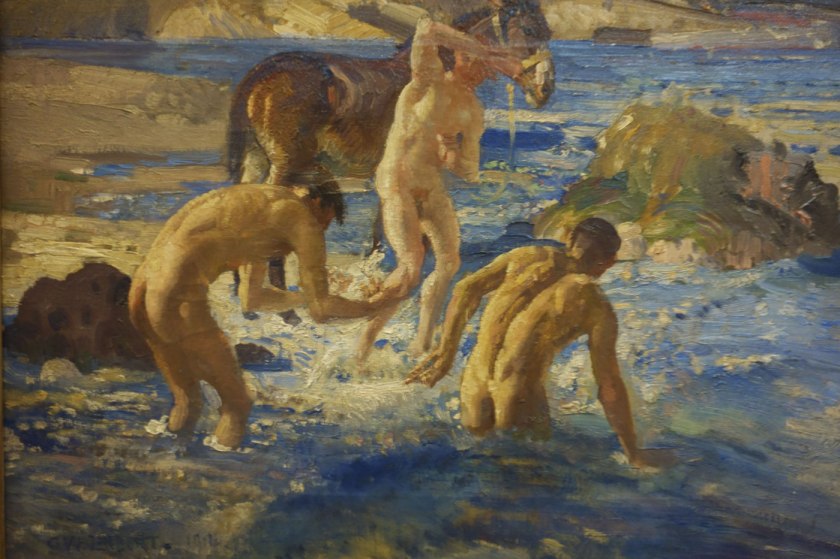
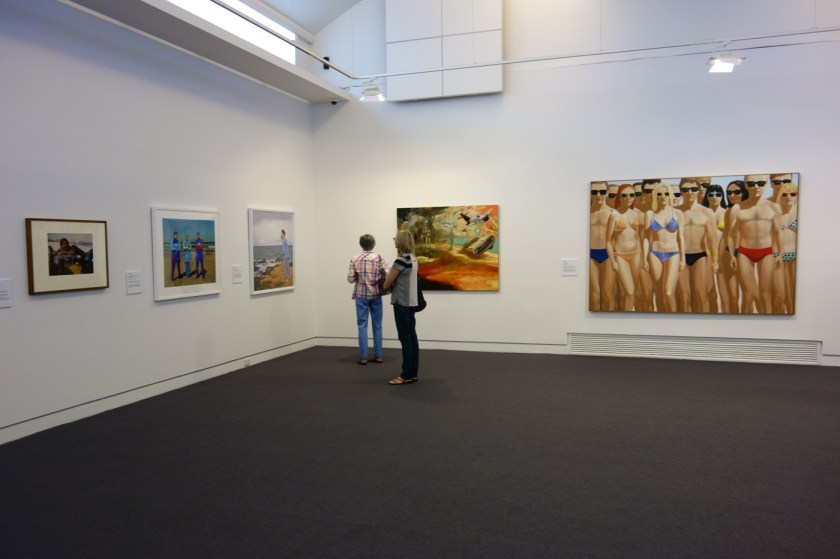
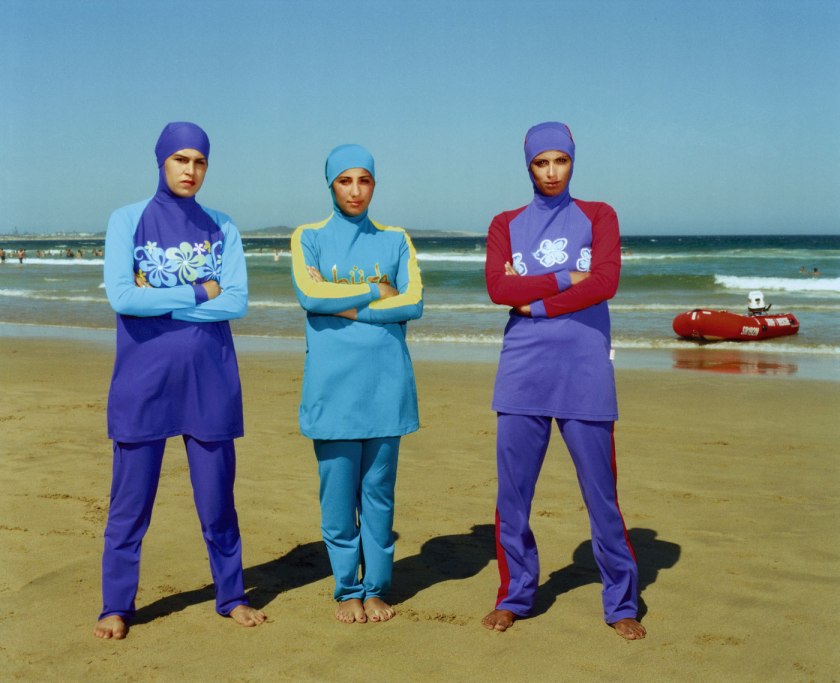



You must be logged in to post a comment.